In June 2017, Greenland suffered a major natural disaster when a mountain side collapsed into a fjord, creating a tsunami. Directly in its path was Nuugaatsiaq, a small settlement of 84 people.
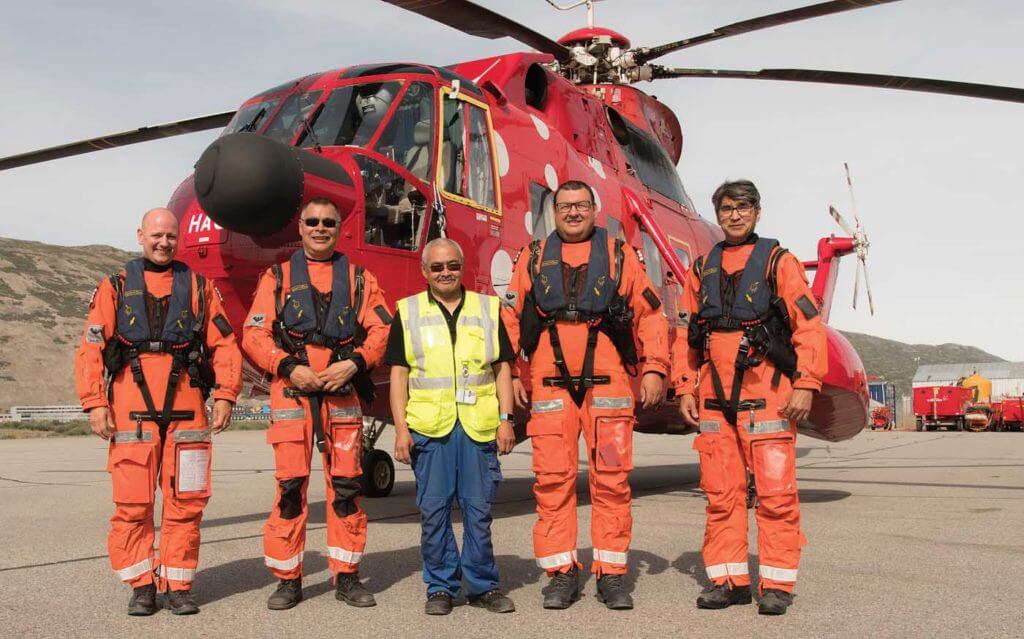
Although some of the force of the wave had dissipated by the time it reached the settlement, the row of houses at the edge of the fjord was swept away, with four people losing their lives. Sadly, hundreds of sled dogs were tied up outside the buildings with no chance of escape — 150 died, and many of the 100 remaining dogs were injured.
Crews from Air Greenland Search-and-Rescue (SAR), operating a Sikorsky S-61N from Kangerlussuaq (Søndre Strømfjord), were gathered to assist in searching for survivors and to evacuate the remaining residents and dogs. The mission would become the biggest operation in the company’s 50 years of flying the S-61.
Having been briefed by the Joint Rescue Coordination Centre (JRCC) under Joint Arctic Command, the S-61N departed with four pilots — two flying and two on crew rest — along with hoist operators and hoist assistants. Once at Nuugaatsiaq, each crew was on duty for 12 hours a day for nearly a week, supporting the dozens of residents who had been affected by the disaster.
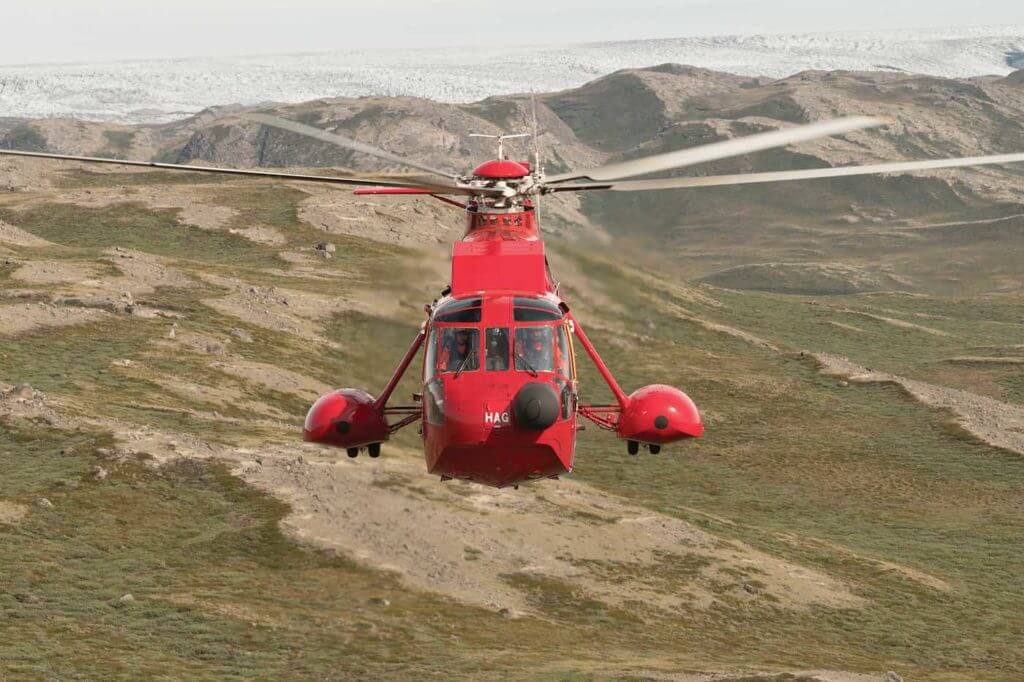
In the following week, the crews’ tasking changed from carrying people to dogs, as the residents rounded up all of the surviving animals. Supporting the effort were two Air Greenland Bell 212s and a Danish Navy Westland Lynx, with a Danish military ship providing air traffic services in the fjord.
Doing what it takes
The Nuugaatsiaq mission highlighted the complex and unpredictable nature of SAR operations in Greenland, which are quite unlike those undertaken in many other parts of the world. The operating area for these missions is vast, but infrastructure is minimal, as Greenland’s population of just 57,000 gives it the world’s lowest population density. Individual SAR mission statistics are misleading, as missions could last an entire day or even up to a week.
The Danish Arctic Command, with its headquarters in Greenland’s capital, Nuuk, is responsible for sea rescues outside of the small islands, while the mainland and islands remain the responsibility of the police. On the air asset side, JRCC Greenland (AIR) is in charge.
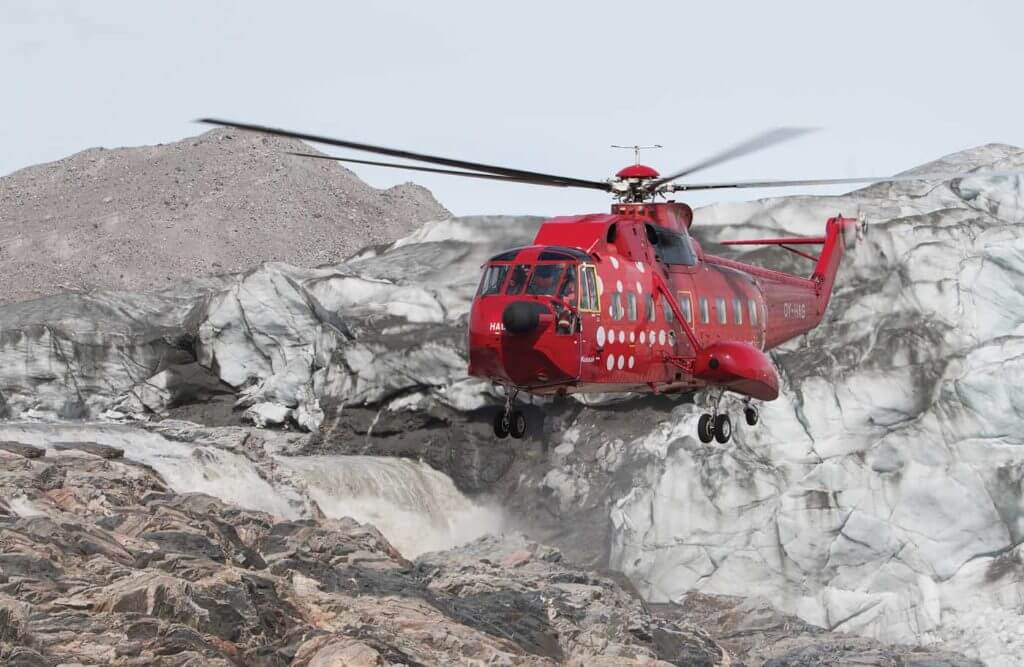
“We have a response time to be in the air within an hour both during the day and night,” said Mark Henriksen, chief pilot for the SAR S-61N helicopter. “Often, we average 30 to 45 minutes. The reason we are not quicker is because of the planning for the people to support us — nurses, doctors or police — and we have to wait for them. Sometimes it will be necessary to fly along the coast to collect them from another settlement and the distances preclude fast response times.”
The S-61 has operated in Greenland since 1965, and currently operates under the SAR contract with the Danish government — a contract Air Greenland has had since December 2012. The company operates two S-61Ns, and uses them for charter flights when they are not engaged in SAR missions.
Both S-61Ns have been operating in the Greenland climate since 1965, which has proven to be beneficial on the maintenance side, as the country’s low humidity has forestalled corrosion. With the aircraft type operating in the same area for over 50 years, Air Greenland has accumulated a huge stockpile of spare parts, including a former Irish Coast Guard S-61.
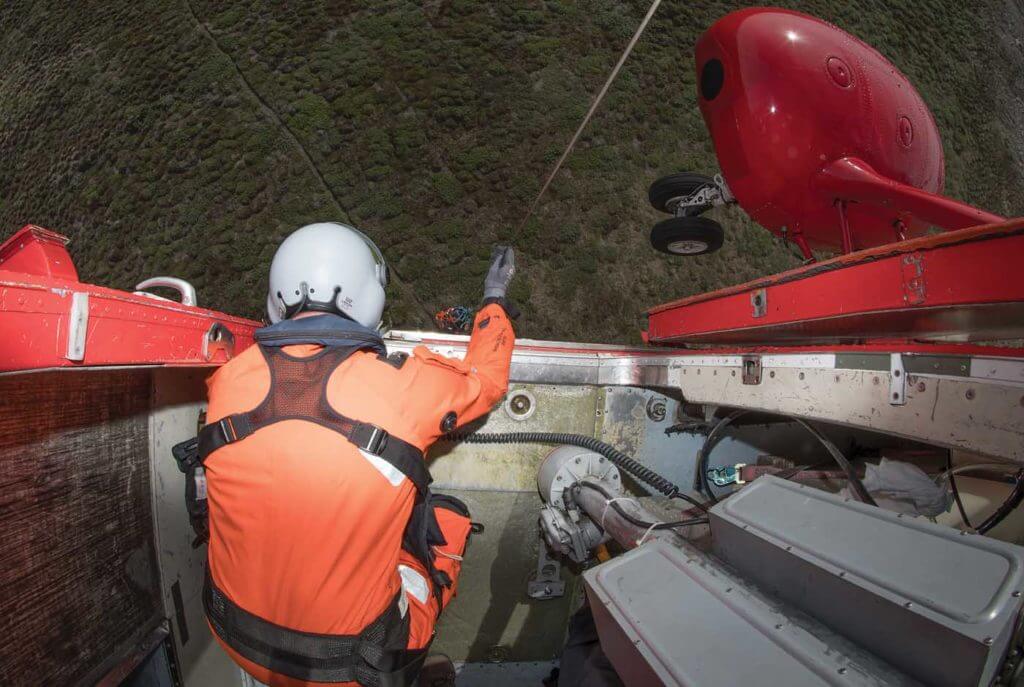
Both helicopters have an internal auxiliary fuel tank, which increases
endurance to a maximum of five hours and 10 minutes at a burn rate of 1,050 pounds per hour, for both engines. Very rarely will the helicopter be left full of fuel; operating in such cold temperatures, once the aircraft is towed into the warmer hangar the fuel expands and leaks onto the floor. In case there is a need to take on additional fuel while en route, fuel drums are placed around key locations in Greenland. The S-61 can also carry 53-gallon (200-liter) drums, which can be directly fed into the center tank, providing an extra 20 minutes of flying time when needed.
The S-61 can operate to a minimum temperature of -58 F (-50 C), with winter temperatures of -40 F (-40 C) being the norm. Because of these extreme cold temperatures, the S-61 is stored inside a hangar as much as possible. If it is outside for any amount of time, the helicopter has heating pipes that pump warm air into the cabin and around the gearbox to heat it up. Pilots can then rotate the blades a few times before starting the helicopter up. The main start-up checks are done in the hangar, with six to seven checks only possible outside. Opening the hangar doors unnecessarily would let a costly amount of heat out — it’s an estimated 10 to 15,000 Danish Krone (US$1,657 to $2,485) to re-heat the hangar each time.
Smooth operations
Air Greenland provides accommodations in houses on the opposite side of Kangerlussuaq airfield, so the crews, who spend three weeks on duty and three weeks off, are only minutes away from the hangar. During a live SAR mission, the crews will arrive at the hangar and pick up a shortened activation report that is sent direct to a specific email address, printing automatically.
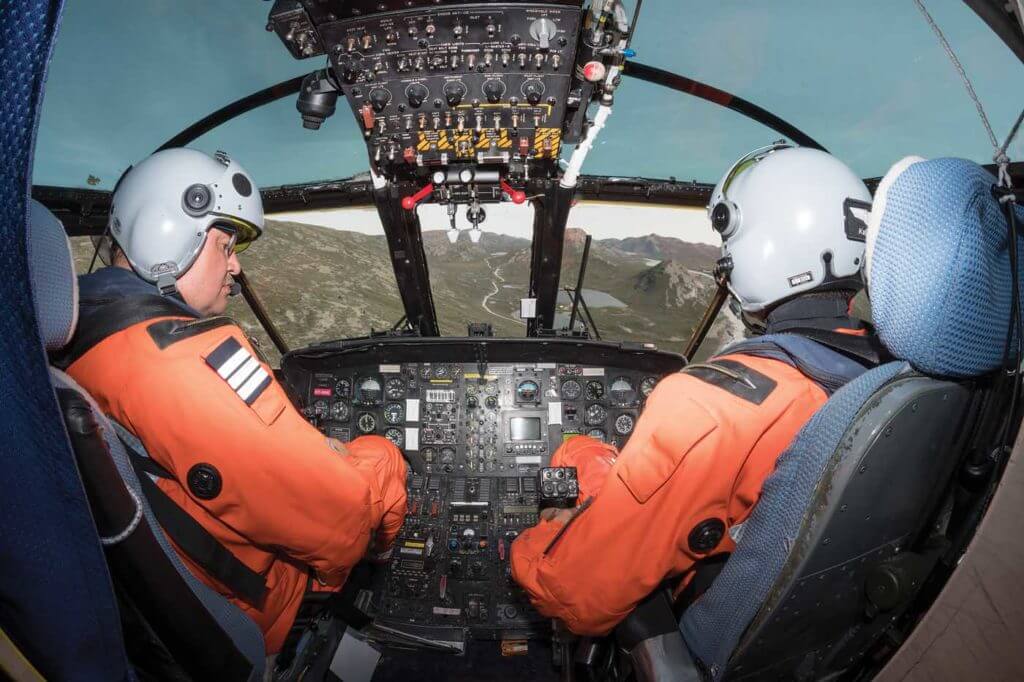
Over the past four to five years, Air Greenland and Joint Arctic Command have built a strong working relationship. “We have found that the SAR operations here have improved immensely by working closely,” Henriksen said. “We depend on the command for the information and we feed back what we have done during the mission.”
Air Greenland operates with nine SAR pilots, nine hoist operators and three hoist assistants. “At the present time the mechanic is also the hoist operator, and we have a hoist assistant,” Henriksen explained. “The hoist operators only have first aid training and even if the person is suffering from dehydration, they are not permitted to administer a drip.”
At press time, one of Air Greenland’s S-61Ns was in the process of being overhauled, with its General Electric CT58-140 turboshaft engines receiving an upgrade to 1,500 horsepower from Vector Aerospace (now StandardAero). Once that aircraft returns to service, one S-61N will remain at Kangerlussuaq while the other will be dedicated to charter work through the summer months.
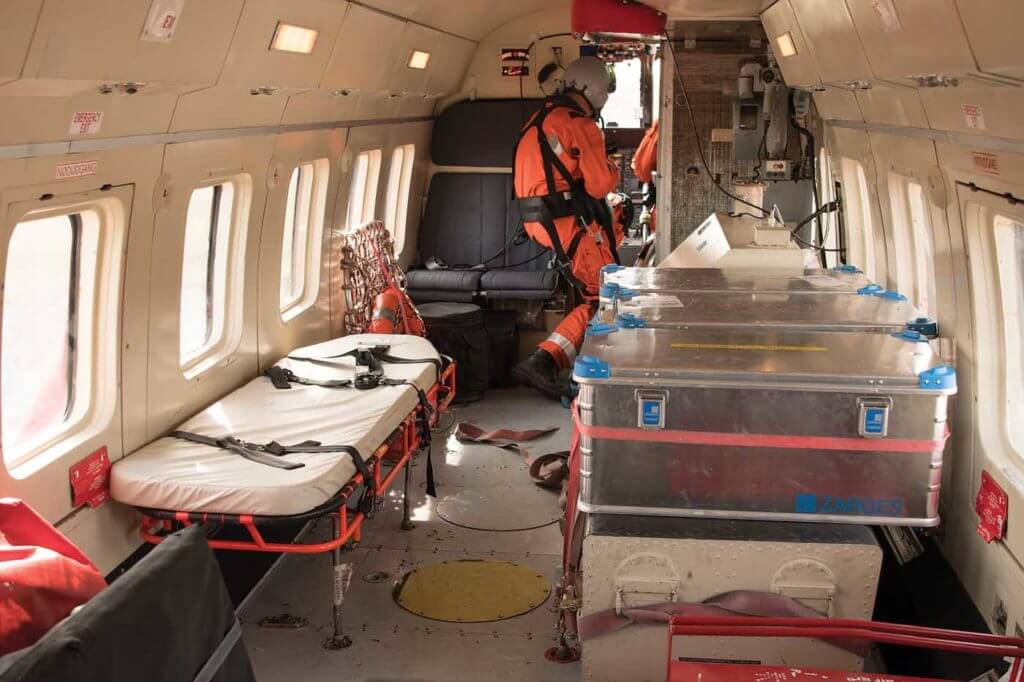
In 2018, the SAR tender will be up for renewal. According to Henriksen, “It’s a very complex situation. Everyone has views on what should or shouldn’t be in the contract, but from an operating perspective it’s essential to take in account Greenland’s geography — the vast distances and [low] population define the SAR operation regardless of the contract owner.”





